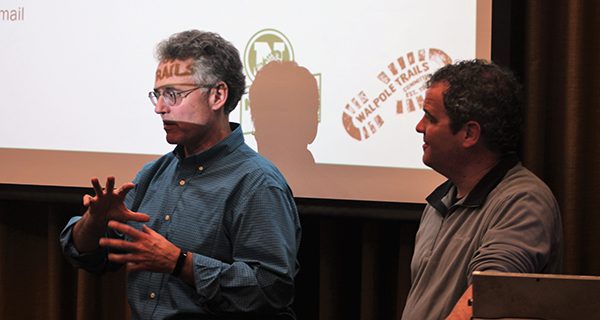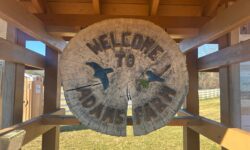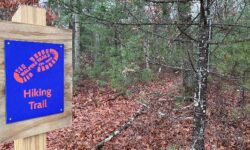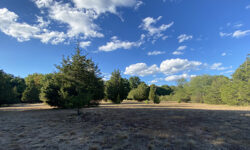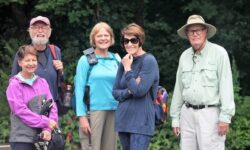[ccfic caption-text format="plaintext"]
By James Kinneen
Hometown Weekly Reporter
Considering how little town lines and borders on the map matter to the natural world, it only makes sense that neighboring towns work with each other on issues like reserved land, hunting, fishing, and the preservation of hiking trails. But with politics being what it is, that’s not always the case. Last Thursday night inside the Norwood Library, the leaders of both the Walpole and Norwood Trails committees gathered to show off the work they’ve been doing together, as well as to talk about the work they’d like to do in the future.
Walpole Trails Chairman Gary Riggott was the first to speak, delivering a speech that focused on showing off Walpole’s trails to a crowd of Norwood residents. He spoke at length about how the group organizes hikes for seniors behind the Walpole Co-operative Bank South Street Center, because unlike younger people, seniors are far more wary of taking off on a trail they don’t know and risking getting lost in the woods. He also spoke of the annual “First Day Hike” and how it has blossomed into a good-sized, well-attended event, and how (as it is guided) it acts as a great introduction to Jarvis Farm (which is often seen as being a bit intimidating to the uninitiated). He spoke a little about the new sports fields off 1A, and the trails they are going to have in that area. But the main thing he spoke about was the potential of a Walpole-to-Wrentham rail trail.
Riggott believes that you can the footprint of this old, unused railroad track and make a nice trail out of it - and he has the law on his side. Massachusetts law (chapter 40, section 54A) stipulates that “If a city or town or any other person purchases any former railroad right-of-way in the Commonwealth, no permit to build a structure of any kind on land so purchased shall be issued by any city or town in the Commonwealth without first obtaining the consent, or a determination of inapplicability, in writing to the issuance of such permit from the secretary of the department of transportation.”
In layman’s terms: if a developer wants to build on the old railroad tracks, they need to get permission from the Secretary of the Department of Transportation. Unfortunately, the group didn’t realize this law until recently, so there has been some development on top of the old tracks that would be an issue for the potential trail.
Other potential future projects for Walpole include viewing platforms on the Jarvis Farm Boardwalk, acquiring trail access to the rail trail at Cedar Swamp, and getting direct access to Cobb’s Pond at the end of Castle Terrace.
When Riggott had finished speaking, Joe Greeley, the head of Norwood Trails, took the stage. One of the things from his speech that should interest Walpole residents (aside from the fact that Norwood apparently has a wild bald eagle flying around) is that Norwood is trying to create a network of trails around its borders. Greeley is hoping this network becomes the town’s “emerald necklace.” Norwood is also trying to find a way to connect to Walpole’s Endean trails.
It should be noted that a couple times during the presentation, the groups both acknowledged that on some of these trails, hikers are likely to have to walk on the street at some point. While it would be great if the towns could create endless, woods-only paths, that’s just not feasible. A woman in the crowd even pointed out that on the famed Appalachian Trail, there are sections where one must emerge from the woods and walk on the street.
Still, it’s hard to look at what Walpole Trails (which, Greeley noted, was around before, and greatly inspired Norwood Trails) has done alone, and not get excited thinking bout what they could do with the help of neighboring communities. Maybe after all that bushwhacking, the hiking, the thorns and the ticks, bringing communities together to create these new paths will be the most trailblazing thing Rigott and Greeley can do.



